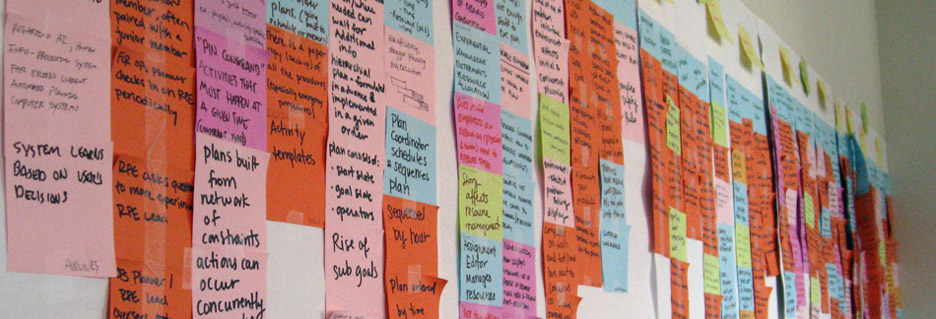Research Overview
Process
To inform our final prototype, we utilized Contextual Design methods to explore planning both at NASA and in analogous domains that exhibit similar plan- ning and execution challenges. Our user research investigated the hallmarks of planning commonly exhibited across many disciplines, including real-time re-planning, unforeseen circumstances, remote communication, and authority tension. With these foci in mind, we conducted six Contextual Inquiries and three interviews in the domains of human space missions, surgical ward, and news broadcasting.
In addition to our user research, we performed a literature review surveying domains with planning workflows that map appropriately to human space missions. Finally, we analyzed several project management software packages, as well as other industry-specific planning tools, to investigate current methods and approaches of addressing challenges in planning and execution.
Findings
Our research findings consolidated into five prevailing
problems of human planning and execution:
- Inflexible plans fail to capture the invariable nature of execution.
- The difficulties of communicating experiential and in situ knowledge result in uninformed plan making.
- Shift handoffs within roles often involve poor information transfer, resulting in poor situational awareness and increased operating expense.
- Dependencies between highly siloed roles ungracefully accommodate human error, which has cascading effects.
- Any single representation of the plan fails to accommodate the varying needs and responsibilities across roles utilizing the plan.
These five challenges of planning provide a guiding framework from which to approach and produce an innovative interface design that addresses the unique needs of human space missions.



